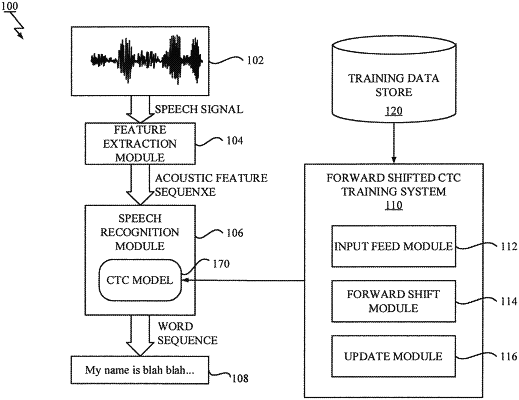| CPC G10L 15/063 (2013.01) [G06F 17/18 (2013.01); G06F 18/24 (2023.01); G06N 3/047 (2023.01); G06N 3/084 (2013.01)] | 22 Claims |

|
1. A computer-implemented method for training a model, comprising:
obtaining training samples including an input sequence of observations and a target sequence of symbols;
feeding the input sequence of observations into the model to obtain a sequence of predictions;
determining a time delay between spike timings and acoustic features obtained from the model being trained and reducing the time delay between spike timings and acoustic features obtained from the model being trained by forward-shifting the sequence of predictions for a part of the training samples with respect to the input sequence of observations to generate a shifted sequence of predictions;
enhancing alignment accuracy between spike timings and acoustic features, and maintaining alignment of the timing between the input sequence and the shifted sequence using a compensatory last-element extension technique; and
updating the model based on a loss determined by a loss function computation using the shifted sequence of predictions and the target sequence of the symbols.
|